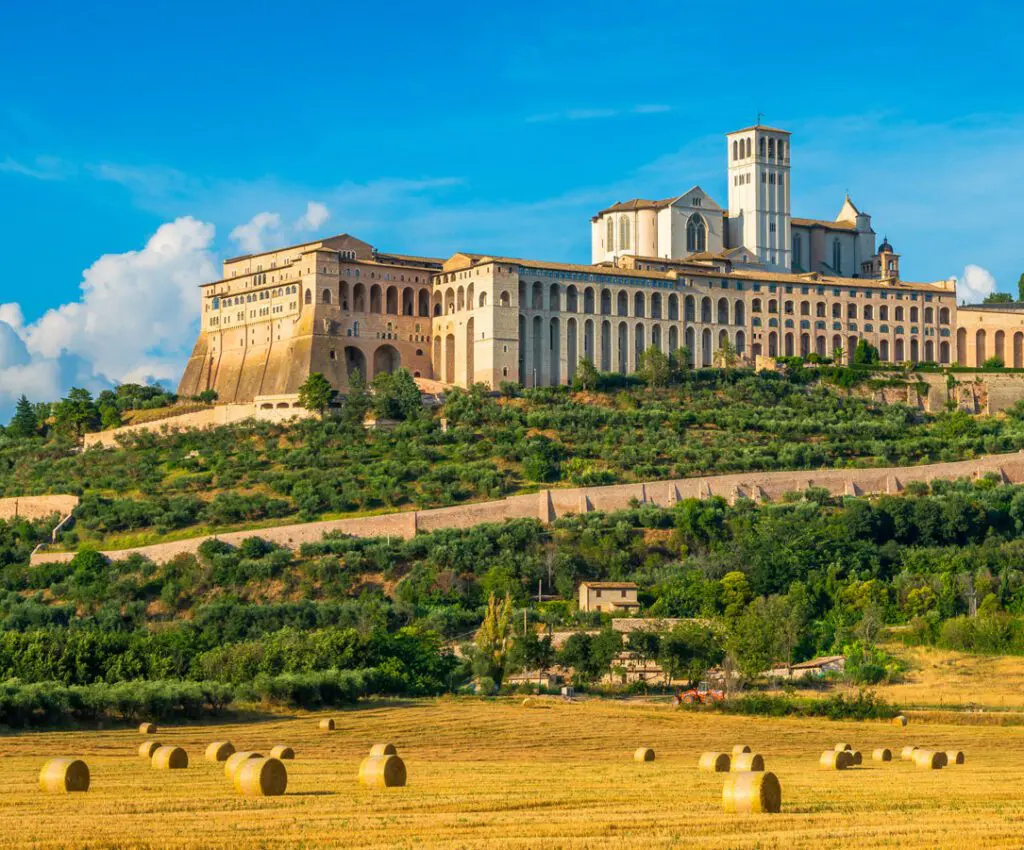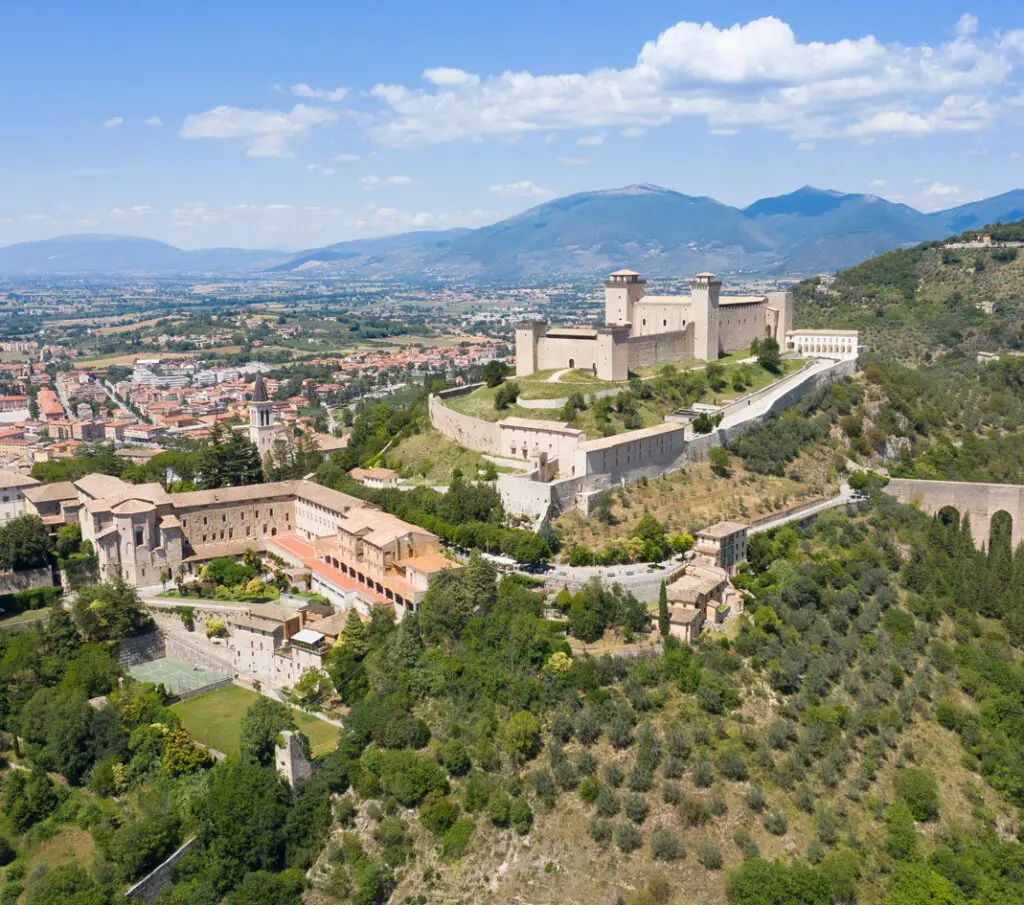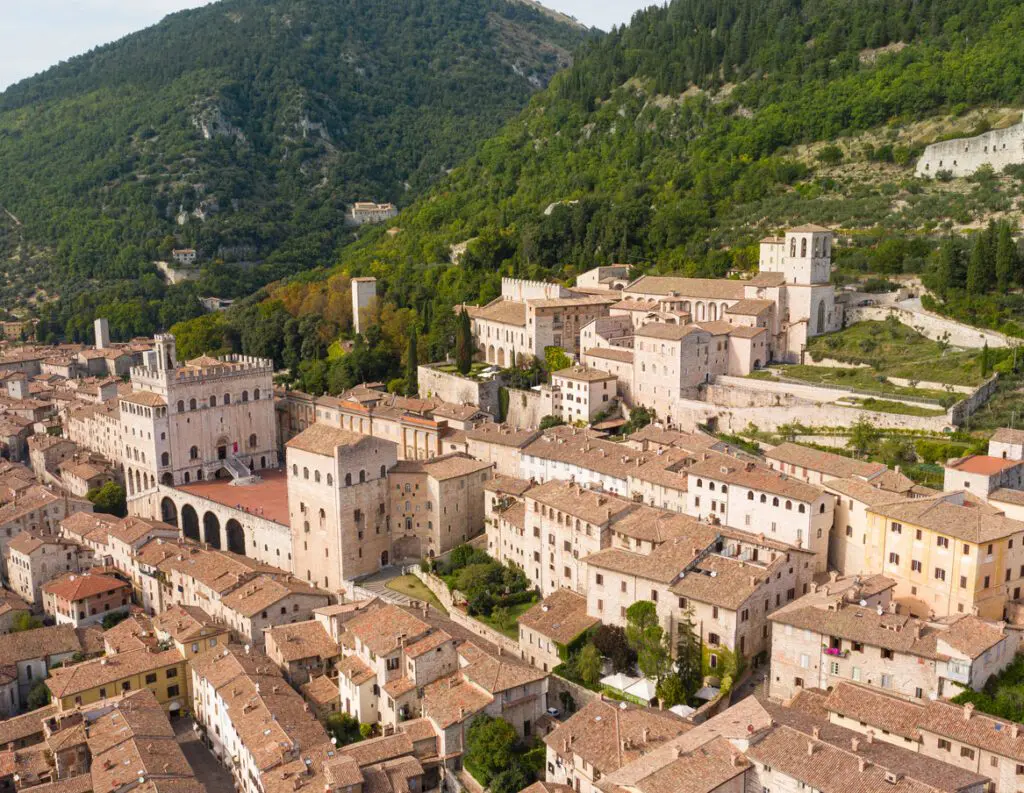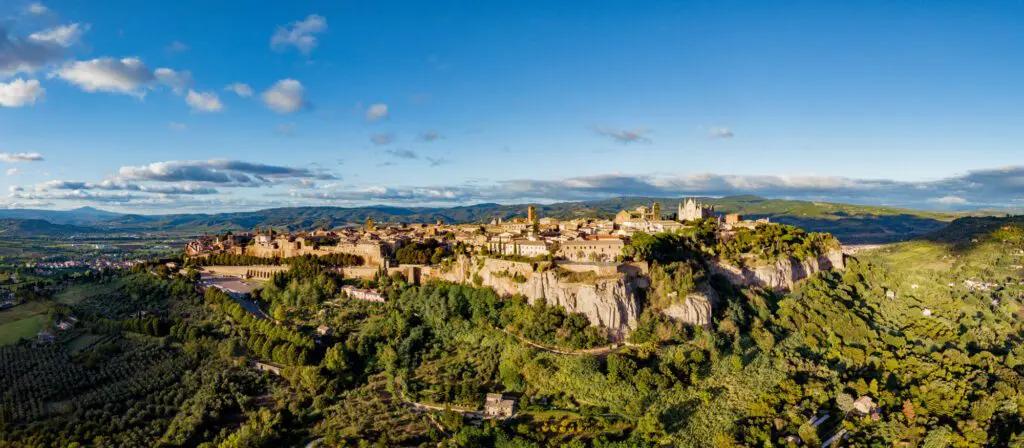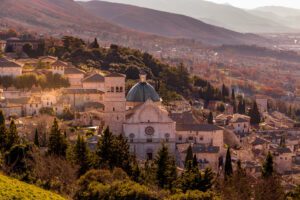A Look at Our Ancestors
South of Gubbio's Medieval quarters the Guastuglia Plain (pron. goo-ast-oo-Leah) lies, delimited west by the so-called vallum (military defense line), and east by a river called Camignano (pron. come-in-ya-know). From this area you can admire the Medieval town center, a little above, and the old buildings – the Palace of Consuls, first of all – that made the history of Gubbio.
In the second century BC, when the Roman influence was well stabilized, this area underwent intense city planning. The pre-Roman settlement, in fact, could no longer meet the needs of a civilization that expanded more and more and acquired more and more importance. Among the monuments that have remained, the main evidence from ancient Iguvium ( > Gubbio) is the Roman theater
The Importance of Drama for Greeks and Romans
In ancient European civilizations, theaters were a most meaningful spaces. In Greece, drama has a basic importance for the whole population: plays in Athens, in fact, had a fundamental religious dimension, to the extent that any citizen could attend them. To the Greeks, this was not simply a hobby or pastime: each play – be it comedy or tragedy – was written in order to have the audience ask questions to themselves, feel incited to reflect on contemporary issues; so as to educate them. Theaters was therefore conceived as spaces for freedom, from the beginning.
By getting in touch with Greek civilization, the Romans discovered the vast cultural heritage of Ancient Greece, and adopted/adapted it while reworking and improving the very architecture of theaters. They besides were strongly influenced by the literary patterns in Greek plays, that they often translated and put on stage with changes fitting in with the new context.
The Structure of the Roman Theater
This is what the Roman theater in Gubbio looks like, too. It originally had two rows of arches, that made the skeleton of both the cavea (the empty volume inside) and the outside of the building. Currently, only the lower row has remained, corresponding to the vaults that support the tiers of seats; while just some arches survived of the upper row, then reinforced with brick walls. Documents inform us that there also existed a 27-arched portico above the upper level. It was made in opus quadratum, i.e. the now classic brick pattern.
The cavea, whose diameter was 70 meters (210 feet), could host some 6,000 spectators. This stresses the great importance of this building at that era, since – making comparisons with whole Italy – the dimensions of its cavea are only inferior to the colossal theaters of Marcellus and Pompey in Rome.
The spectators looked at the orchestra, i.e. the semicircular area, or pit, at the lower end of the stairs; and the proscenium, a rectangular stage, 36 meters (110 feet) long, where the play took place.
Gubbio's Theater in History
The Roman Era
One of the fascinating things with Gubbio's theater is the different uses it was put to during the centuries.
According to the most recent conjectures, it should have been built during the Cesar vs. Pompey civil war, about 55 BC.
In 1863, in the ruins of the theater an honorary inscription was found that referred to works made by some Gnaeus Satrius Rufus. It informs us that some parts of the structure were restored in a period between 27 BC and 14 AD.
In the widespread crisis that followed the fall of the Roman Empire, when Italy was ravaged by wars, the theater was reused as a defensive structure, like a fortress. This has been apparently confirmed by some findings – human remains, the many signs of a fire, and wooden elements in pieces.
The Middle Ages
During the whole Middle Ages in Italy, materials from Roman buildings were very often reused, nor does Gubbio make an exception. So, parts of the walls and other architectural elements of the Roman theater were re-employed for either the town walls, of churches, or the palaces of noble families in town.
We also know that in 1225 a group of nuns asked the bishop for a permission to use the theater itself as a location for monastic life. This is why the Church of Saint Mary del Pellagio was built on the old ruins, though nowadays no remains of that church are extant. An interesting parallel with Spoleto's amphitheater can anyway be made; the monument has been excellently preserved, and on its remains the structure of the Church and monastery of Saint Agatha is still visible.
The 16th century
In the 16th century, the nun's monastery was moved to a different place in Gubbio by decision of Pope Leo X, who meant to use the Roman theater as a military fort; though the Pontiff's death would then stop the project.
The first documented archaeological excavations in this area date back to 1562, carried out by Count Gabriele De Gabrielli. Many finds were brought back to light, and probably it was precisely in this campaign that the precious mosaic where a roaring lion crushes a panther was discovered. It is currently kept in Leicester, UK.
The Following Centuries
In the 19th and 20th centuries the theater became the object of more and more numerous excavations as well as restorations, thanks to which the old architecture we can now admire was retrieved.
After all Renaissance vicissitudes, the whole area was mainly destined to agriculture, with just some scattered houses. There was even one farmhouse built right against the theater cavea; it would be demolished in 1900.
The Roman Theater Today
As the ancient inhabitants of Iguvium did, we also can enjoy the thrilling experience of attending plays in this location, so unique and charming. It is a place that still re-echoes the history of past generations, and is ready to offer its beauty to all those who can get it.
INFO
Location
Viale Teatro Romano, 06024 Gubbio PG
Guided Tours Schedule
Monday - Wednesday:
chiuso
Thursday - Sunday:
10:00 - 19:00
Contacts
info@secretumbria.it




